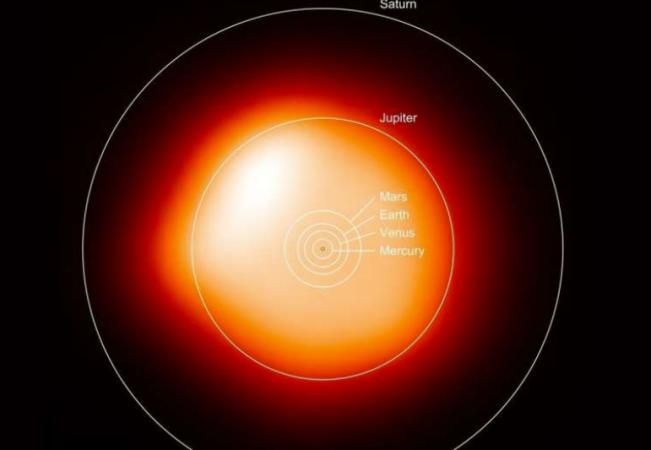Betelgeuse ranks among the most recognizable stars visible in the night sky. Situated roughly 640 light-years away from Earth within the constellation Orion, this red supergiant is approaching the final stages of its life cycle and is expected to eventually explode in a supernova. Currently measuring more than 700 times the diameter of the Sun, it has fascinated astronomers due to its irregular changes in brightness.
In late 2019, Betelgeuse underwent a significant dimming event, leading to speculation that it might be on the brink of a supernova explosion. Although this incident was later attributed to a large dust cloud obscuring its light temporarily, it underscored the unstable nature of this aging star.
Betelgeuse falls into an intriguing category of stars that exhibit mysterious behavior. Approximately one-third of cool, luminous stars with extensive convective envelopes—like Betelgeuse—display long-term variations in brightness referred to as Long Secondary Periods (LSPs).
For years, astronomers have proposed different theories to explain these fluctuations, including internal pulsations, the formation of dust on the star’s surface, and massive convection cells within the star itself. However, recent studies have increasingly supported a more compelling possibility: Betelgeuse might have a companion star. The findings have been shared in a paper available on the arXiv preprint server.
Growing evidence suggests that a low-mass companion star could be orbiting Betelgeuse every 2,100 days (about six years) at a distance similar to Saturn’s orbit around the Sun. This hypothetical companion is estimated to have a mass between 0.5 and two times that of the Sun.
While such a companion would not drastically alter Betelgeuse’s ultimate fate, it could still influence the supergiant indirectly through gravitational interactions and stellar wind dynamics. This idea aligns with existing knowledge about massive star formation, as stars like Betelgeuse often form within binary systems.
An artist’s depiction of Betelgeuse exploding as a supernova at the end of its life. Credit: RAS
The companion theory also provides plausible explanations for other peculiar aspects of Betelgeuse’s behavior. For instance, the star’s unusually fast rotation—between 5 and 15 km/s—could result from gravitational forces exerted by an orbiting partner. Additionally, this model accounts for the observed 36-year cycle in both the star’s brightness and radial velocity patterns, contradicting earlier hypotheses that attributed its spin to a past merger with another star.
Despite extensive efforts, the suspected companion remains undetected, likely because it is relatively small, cool, and overwhelmed by Betelgeuse’s immense brightness—especially during recent dimming episodes. In a focused search, a team led by Jared Goldberg used the Hubble Space Telescope’s STIS spectrograph to scan for the companion in far-ultraviolet light, scheduling observations for when it would be most visible.
No definitive signals were found, but this does not necessarily mean the companion does not exist—it may simply be too faint for current detection methods. Future observations in ultraviolet or X-ray wavelengths under more favorable conditions could still reveal its presence.
The hunt for a hidden companion to Betelgeuse is not merely an academic pursuit—it could provide crucial insights into the star’s erratic behavior and its impending supernova. While recent Hubble observations have not yet confirmed the companion, other evidence—such as brightness variations, rotational speed, and long-term cyclical patterns—continues to support the binary star hypothesis.
As observational technology advances and future studies explore different phases of the suspected orbit, this cosmic mystery may finally be resolved. Whether Betelgeuse is solitary or part of a pair, it remains a vital source of information about the life cycles of massive stars.

